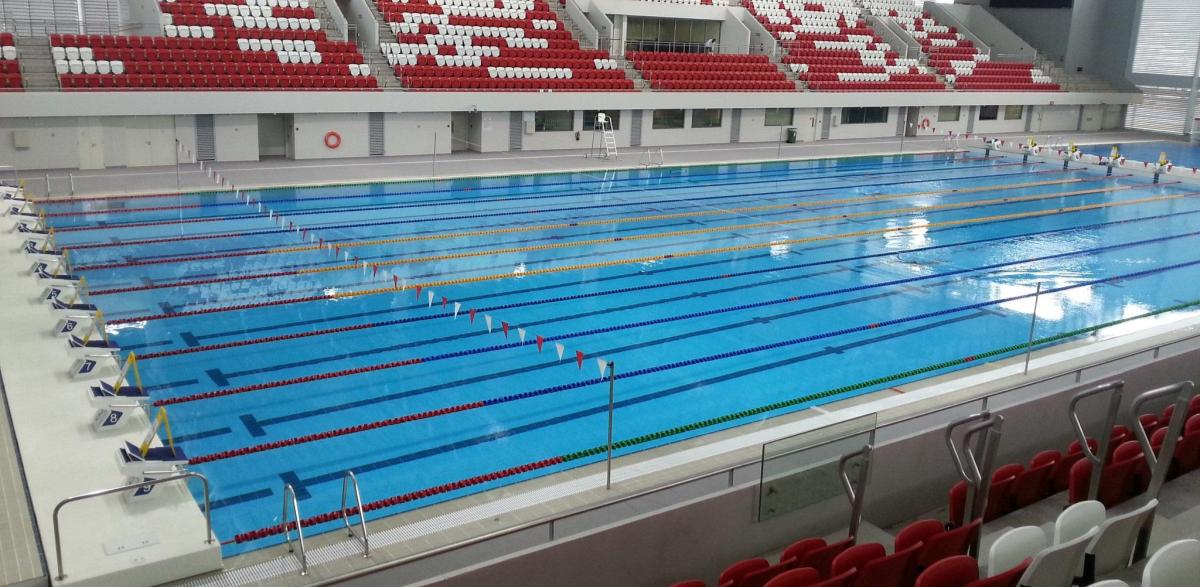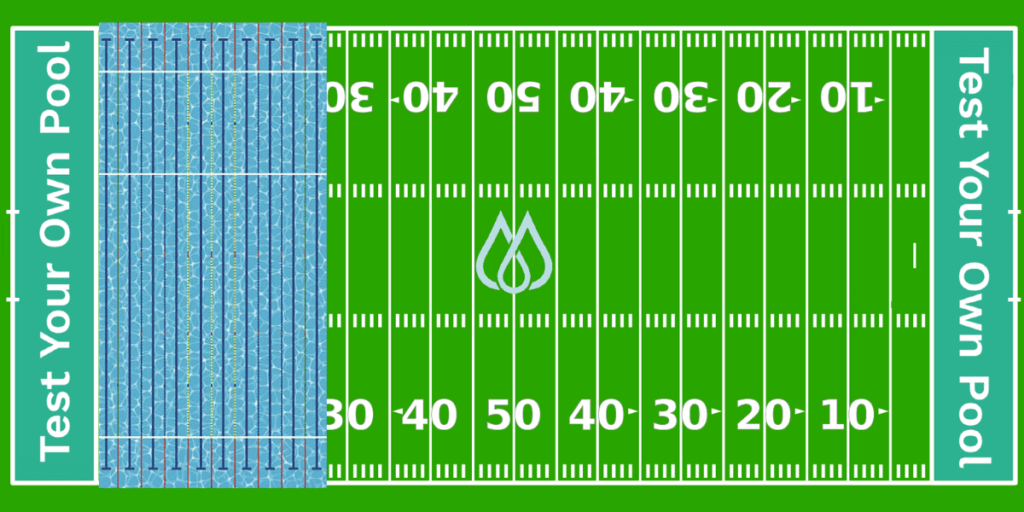What You Need to Know About Olympic Swimming Pools

Swimming has become a staple and sometimes the main event at the Summer Olympics.
Whether the pools are brand new, decades old, or even temporary, they must meet rigorous checks to be approved for the Games. This helps limit exterior factors as much as possible.
More importantly, it helps the athletes’ ability to train in their facilities year-round with the understanding they will be in pools with as close to the same parameters as possible.
World Aquatics, which administers international swimming competitions, lays out the requirements for each pool.
Swimming Pool Dimensions
The most important aspect of these Olympic pools is the dimensions.
The swimming pool is 50 meters long (164 feet). There is a slight “tolerance” for touch pads at each end if they are used, which allows a maximum of 50.030 meters.
There are no set requirements for the pool’s width, but it must meet the lane width of 2.5 meters (~8 feet) for 10 lanes. Because of this, most Olympic swimming pools are 25 meters wide (82 feet).

Like the width, the depth of the pools is not set. The minimum depth is 2.5 meters (~8 feet).
Using our pool volume calculator, these pools can hold anywhere from 800,000 to 1,000,000 gallons of water!
Water Conditions
Like the pool’s structure, the water itself has strict guidelines that must be followed.
The water’s temperature needs to be between 25° and 29° C (77° and 82.4° F).
Also, for the pool to be considered for World Records, it must be less than 3gr per liter of salt. That’s about 3,003 ppm.
Sanitizing Olympic Pools
If you remember the 2016 Olympics in Brazil, the pools turned green from algae due to the water tanks running out of chlorine and other sanitizing chemicals.
It was later clarified that a drop in alkalinity levels caused the pools’ pH to be out of balance.
Even the Olympics have to worry about proper water chemistry! While there isn’t specific guidelines on chemical usage themselves, there is some pretty cool technology used to make sure these giant pools are chlorinated and balanced at all times.
For example, when two temporary pools were built in Nebraska for the Olympic Trials in 2021, the folks responsible for the pool used a calcium hypochlorite feeder system from Pulsar® to keep the pool sanitized.
This feeder system used cal-hypo in briquettes, which dissolved slower and lasted longer in the pool. The feeder allowed a constant chlorination into the pool, and would do shock treatments when necessary.
According to Spear, the company that handled the pool, “…Pulsar® feed systems have always required less scheduled maintenance than other feed systems, but this new Precision feeder required none during its month-long operation for the Tokyo trials.”
Cal-hypo was also a space-saving solution. It required “a fraction of the space that sodium hypochlorite—liquid bleach—would require.”
Enjoy the Games!
It’s truly remarkable to see what goes on behind the scenes to make these Games run smoothly.
Big kudos to all involved, not only for the pool maintenance, but all the tracks, fields, and arenas that make the Olympics a spectacle!
